Papers by Jamillah Williams
Proceedings of the 11th International Conference on Data Science, Technology and Applications
2019 IEEE International Conference on Data Science and Advanced Analytics (DSAA)
While identifying those who are most vocal on social media movements can be straight-forward, fin... more While identifying those who are most vocal on social media movements can be straight-forward, finding hidden groups can be challenging. This poster presents a case study focused on the relationship between mentions of universities in the #MeToo Twitter conversation and policies universities have implemented with regards to harassment and assault. Preliminary results suggest that there is variation in terms of policies, resources and responses to sexual misconduct across campuses and that there is also variation in the number of mentions of different universities. However, there is not a clear relationship between policies and online discussion involving universities.
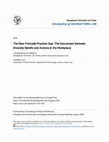
Sociology of Race and Ethnicity, 2022
Following increased calls for racial justice, many organizations have pledged to play their part ... more Following increased calls for racial justice, many organizations have pledged to play their part in dismantling systemic racism. One common step leaders take is to invest in diversity and inclusion programs. Yet, despite organizations’ bold claims to value diversity and the investment of billions of dollars on related efforts, workplace discrimination continues to be a major factor in the lives of people of color. In addition, existing research highlights a principle-policy gap, wherein people—particularly White Americans—espouse support for the principles of diversity, yet their support wanes for policies that address inequalities. In this survey study, we explore attitudes about organizational diversity efforts and further examine how these beliefs shape workplace decision making. Our analysis of open-ended responses reveals a major disconnect, where individuals say diversity is important in principle, yet in practice do not take actions to further the goals of diversity and inclu...
SSRN Electronic Journal, 2021
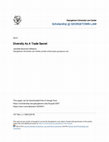
LSN: Labor & Employment Rights (Topic), 2019
When we think of trade secrets, we often think of famous examples such as the Coca-Cola formula, ... more When we think of trade secrets, we often think of famous examples such as the Coca-Cola formula, Google’s algorithm, or McDonald’s special sauce used on the Big Mac. However, companies have increasingly made the novel argument that diversity data and strategies are protected trade secrets. This may sound like an unusual, even suspicious, legal argument. Many of the industries that dominate the economy in wealth, status, and power continue to struggle with a lack of diversity. Various stakeholders have mobilized to improve access and equity, but there is an information asymmetry that makes this pursuit daunting. When potential plaintiffs and other diversity advocates request workforce statistics and related employment information, many companies have responded with virulent attempts to maintain secrecy, including the use of trade secret protection. In this Article, I use the technology industry as an example to examine the trending legal argument of treating diversity as a trade secr...
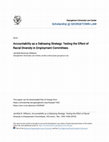
Decision Making, 2017
Congress passed Title VII of the Civil Rights Act of 1964 with the primary goal of integrating th... more Congress passed Title VII of the Civil Rights Act of 1964 with the primary goal of integrating the workforce and eliminating arbitrary bias against minorities and other groups who had been historically excluded. Yet substantial research reveals that racial bias persists and continues to limit opportunities and outcomes for racial minorities in the workplace. Because these denials of opportunity result from myriad individual hiring and promotion decisions made by vast numbers of managers, finding effective strategies to reduce the impact of bias has proven challenging. Some have proposed that a sense of accountability, or “the implicit or explicit expectation that one may be called on to justify one’s beliefs, feelings, and actions to others,” can decrease bias. This Article examines the conditions under which accountability to a committee of peers reduces racial bias and discrimination. More specifically, this Article provides the first empirical test of whether an employment commit...
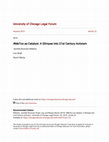
The Twitter hashtag #MeToo has provided an accessible medium for users to share their personal ex... more The Twitter hashtag #MeToo has provided an accessible medium for users to share their personal experiences and make public the prevalence of sexual harassment, assault, and violence against women. This online phenomenon, which has largely involved posting on Twitter and “retweeting” to share other’s posts has revealed crucial information about the scope and nature of sexual harassment and misconduct. More specifically, social media has served as a central forum for this unprecedented global conversation, where previously silenced voices have been amplified, supporters around the world have been united, and resistance has gained steam. This Essay discusses the #MeToo movement within the broader context of social media activism, explaining how this unique form of collective action is rapidly evolving. We offer empirical insights into the types of conversations taking place under the hashtag and the extent to which the movement is leading to broader social change. While it is unclear w...
Academy of Management Proceedings, 2018
SSRN Electronic Journal, 2021
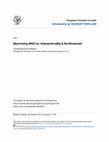
SSRN Electronic Journal, 2020
Although women of color experience high rates of harassment and assault, the #MeToo movement has ... more Although women of color experience high rates of harassment and assault, the #MeToo movement has largely left them on the margins in terms of (1) the online conversation, (2) the traditional social movement activity occurring offline, and (3) the consequential legal activity. This Article analyzes how race shapes experiences of harassment and how seemingly positive legal strides continue to fail women of color thirty years beyond Kimberlé Crenshaw's initial framing of intersectionality theory. I discuss the weaknesses of the reform efforts and argue for more tailored strategies that take into account the ineffectiveness of our current Title VII framework and, more specifically, the continuing failure of the law to properly deal with intersectionality. This analysis and the resulting proposal demonstrate how advocates can leverage #MeToo as an opportunity to reshape law, organizations, and culture in a way that better protects all women, and particularly women of color.
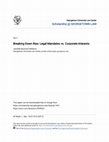
Experimental Studies eJournal, 2017
INTRODUCTIONDespite the advances made since the civil rights era, racial and ethnic differences a... more INTRODUCTIONDespite the advances made since the civil rights era, racial and ethnic differences are still salient and politically divisive in the United States. Bias and discrimination continue to limit opportunities and outcomes for racial minorities in many arenas of life (e.g., employment, education, health care, lending, the justice system, and housing).1 We continue to see racial incidents on college campuses that spark student unrest.2 Violence and killings of unarmed black men, women, and children have become all-too-common as a result of racial profiling and untethered police biases.3 Employers deny job opportunities to qualified candidates because they have black skin or a "black sounding" name.4 The President of the United States campaigned on promises to build a wall around the U.S border, to prioritize the mass deportation of Mexican immigrants, and to ban "certain types" of Muslims from "terror countries."5Some of these examples closely res...







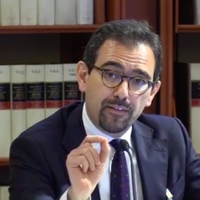



Uploads
Papers by Jamillah Williams